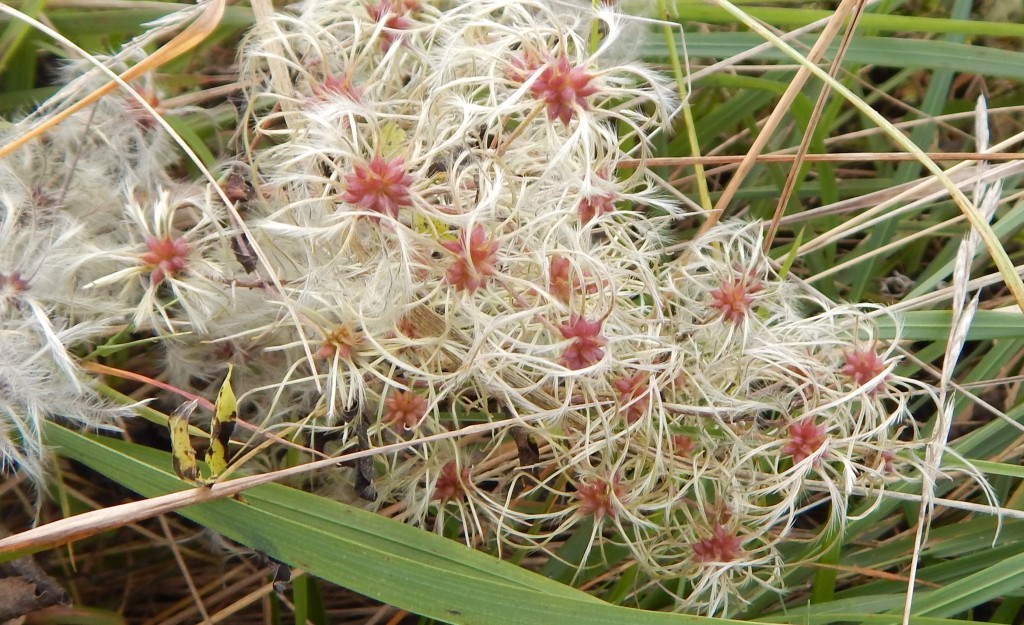
[085] Clematis vitalba, Old Man’s Beard
Introduction
Clematis vitalba, Old Man’s Beard, is a naturally wild species of Clematis found in Britain. It is also known as Traveller’s Joy or Wild Clematis.
Taxonomy
Kingdom – Plants
Division – Vascular Plants
Class – Angiosperms (Flowering Plants)
Order – Ranunculales
Family – Ranunculaceae
Subfamily – Ranunculoideae
Tribe – Anemoneae
Genus – Clematis
Scientific Name – Clematis vitalba
Name
The groups of fruits can easily be seen to resemble an old man’s beard. The name Traveller’s Joy was invented by the herbalist John Gerard (1545-1612) who wrote the most important book about botany of the Sixteenth Century. (Most of the book was an unacknowledged translation of an earlier book by the Flemish botanist Rembert Dodoens.)
The Latin ‘vita-’ means life or, figuratively, mankind, and ‘-alba’ means white.
Description
We have to compare this to other [084] Clematis species. There are obvious similarities and definite differences.
Like other Clematis, it’s a climber and it spreads to cover what it is climbing over.
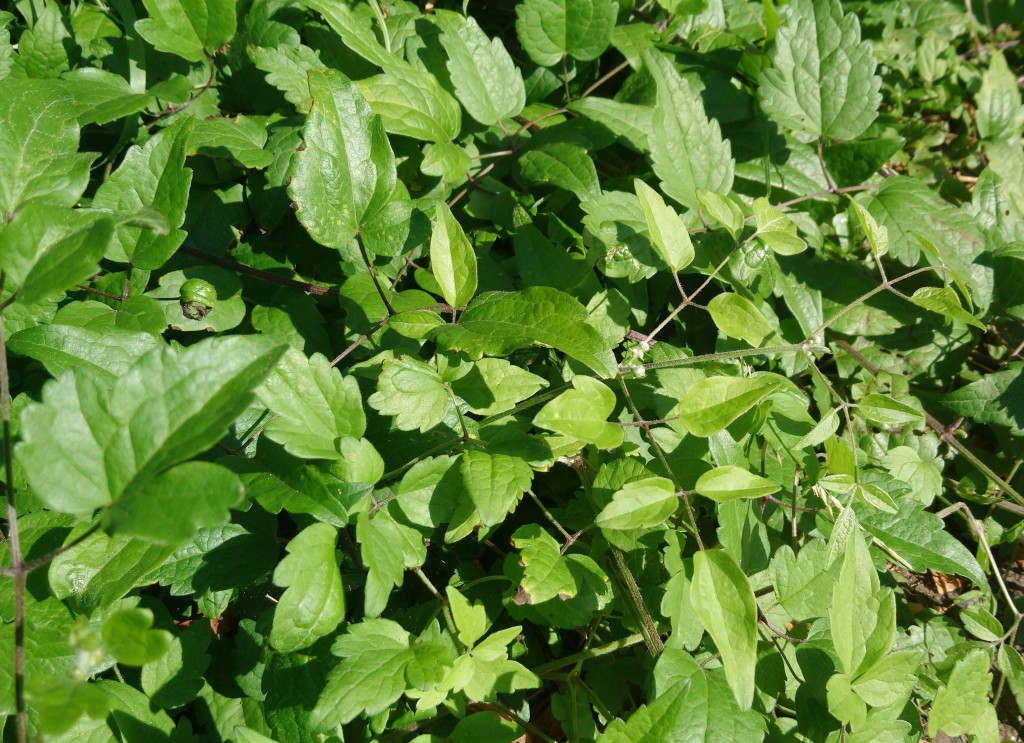
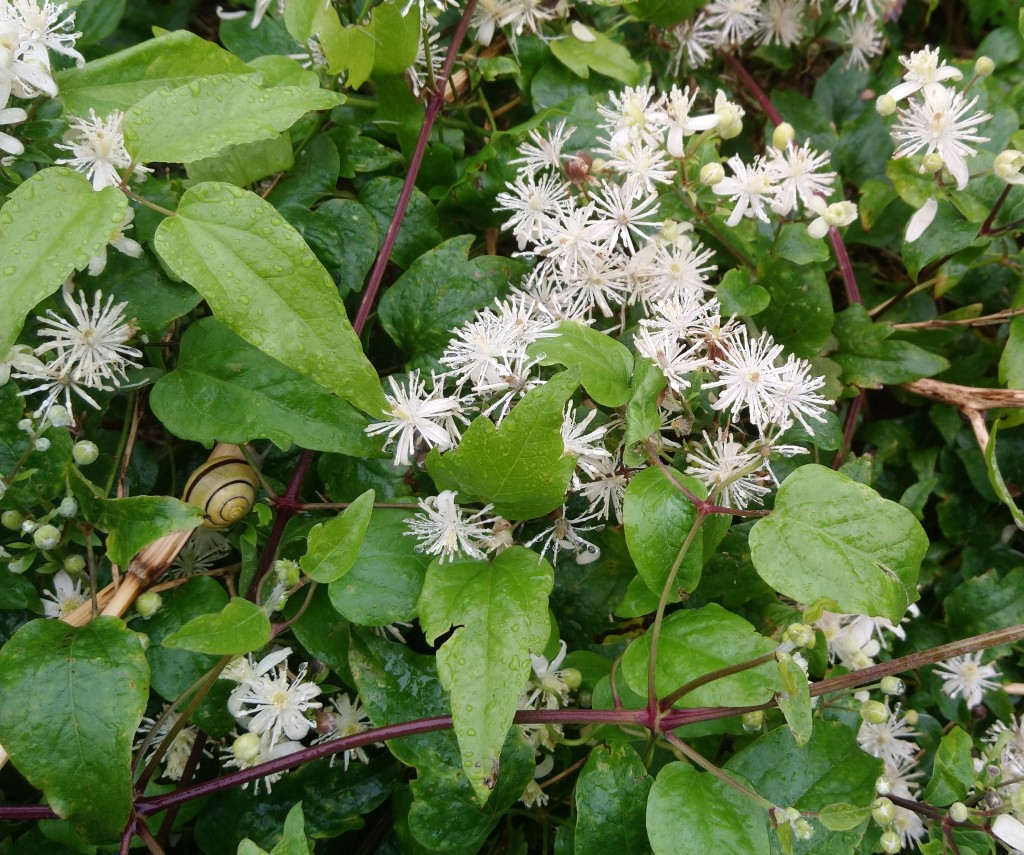
(You will have to wait until [172] Snails to identify the visitor in the second picture above.)
Developing from tiny white buds, the flowers are much smaller than the garden versions of Clematis. They are only about a centimetre in size and the four small white petals are almost hidden by lots of spiky white stamens.
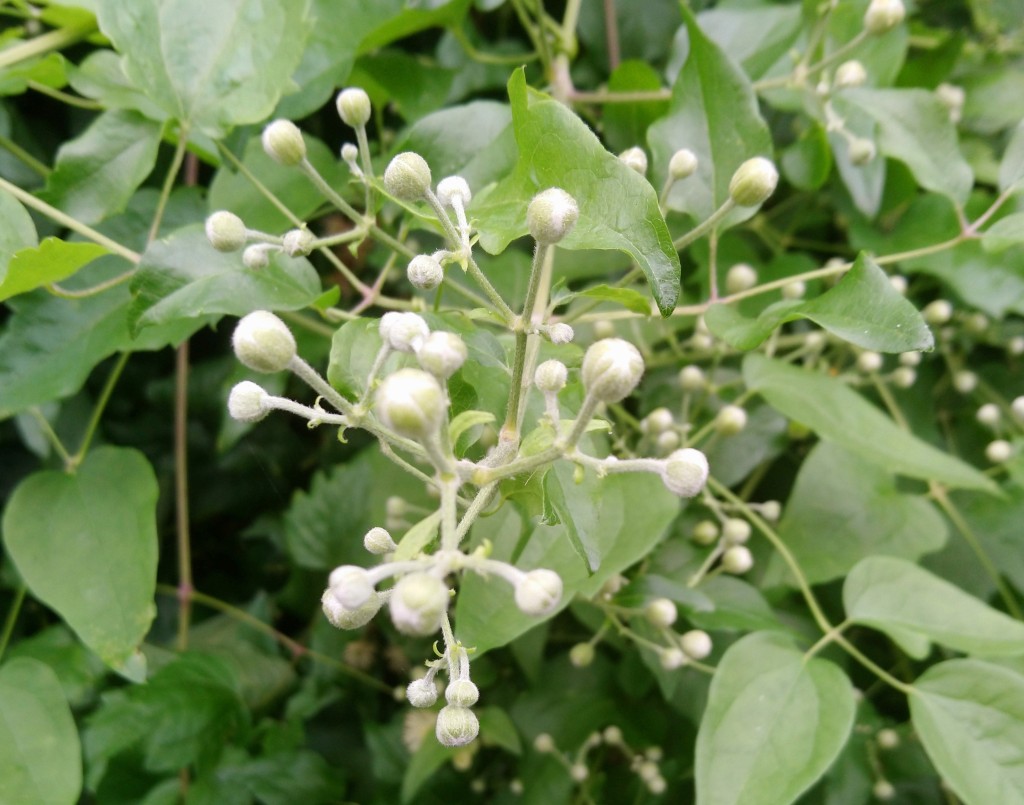
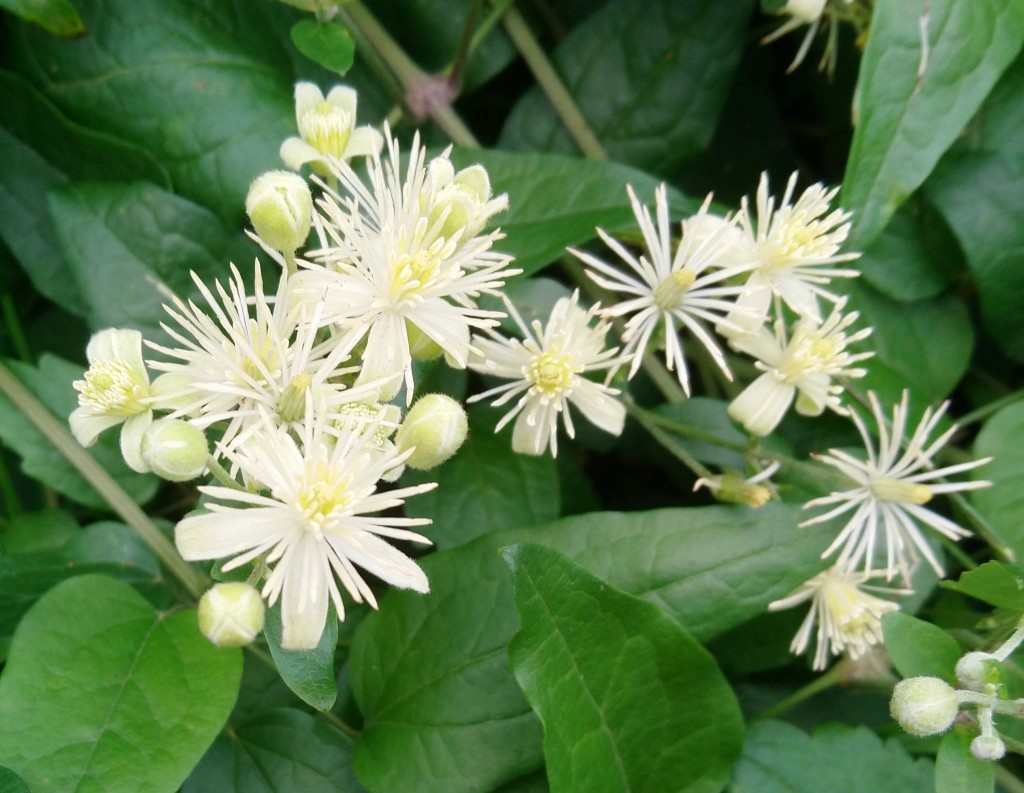


The tiny fruits, called achenes, have feathery extensions which give the overall impression of the old man’s beard as they stay on the plant.
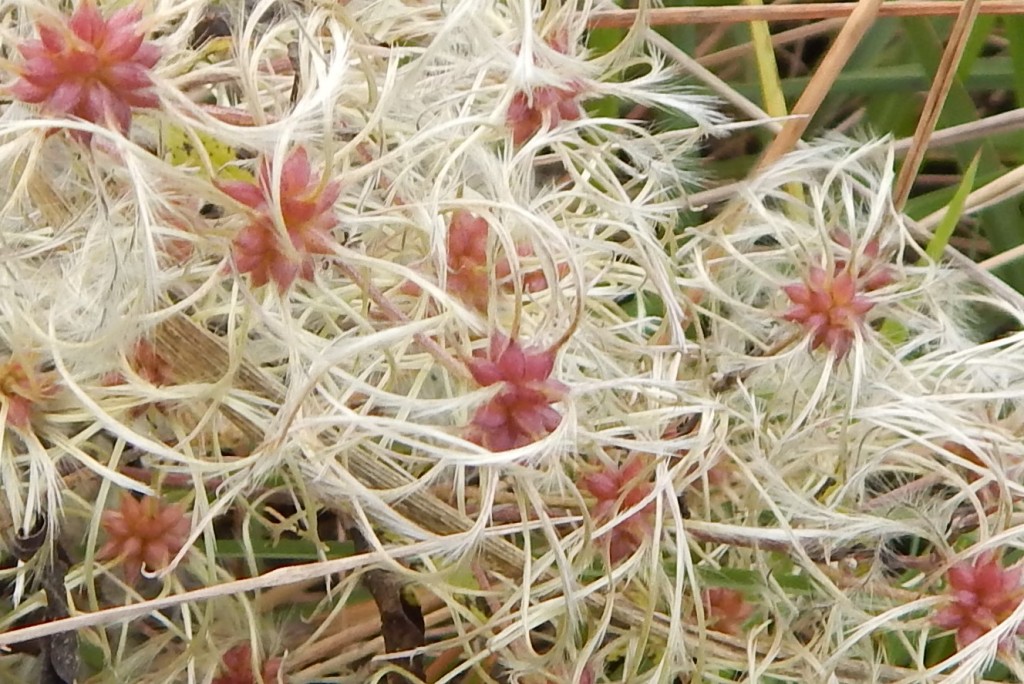

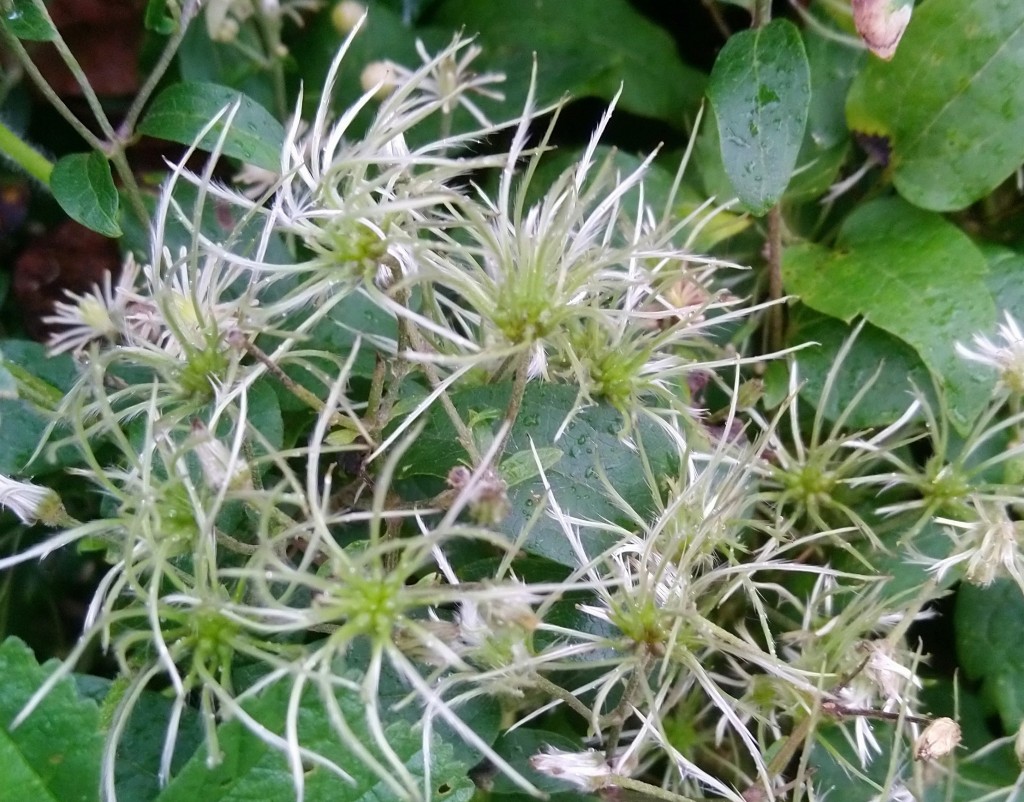

Habitat and use
Clematis vitalba is native to much of Europe. In Britain and grows in all of England except the far North, and most of Wales.
It is sometimes planted as an ornamental plant and in some countries such as New Zealand it has becpme invasive.
Other Notes
This is fairly widespread. I don’t think it is so often treated as a weed in Britain because it is quite attractive.
See also
Somewhere towards the end of May we will see another spreading plant that is considered more invasive.

Pingback: [213] Lonicera periclymenum, Honeysuckle | The Species of Britain